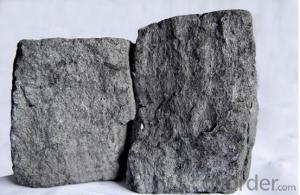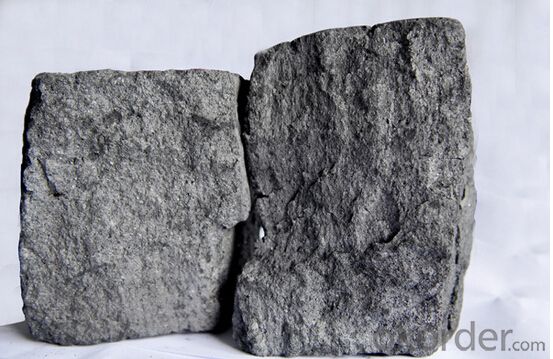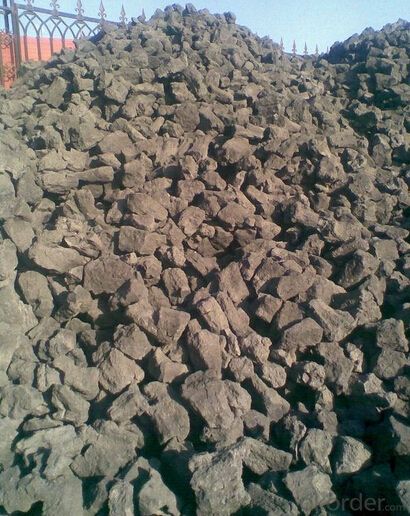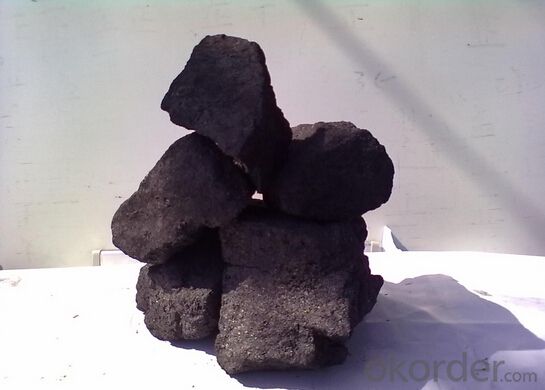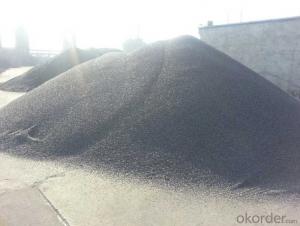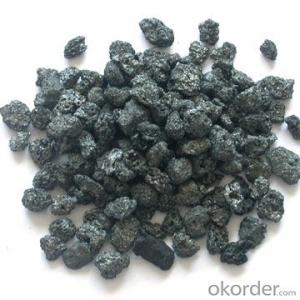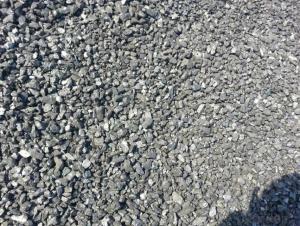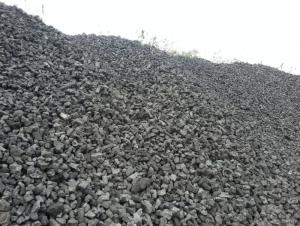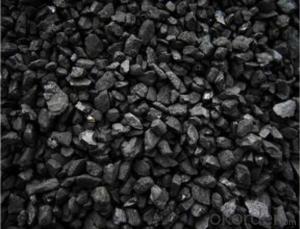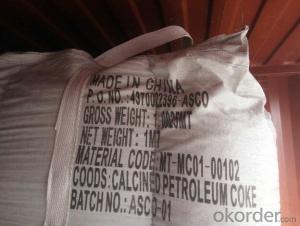Foundry coke (SIZE80--120MM) with Chinese best price
- Loading Port:
- Dalian
- Payment Terms:
- TT OR LC
- Min Order Qty:
- 10 m.t
- Supply Capability:
- 500000 m.t/month
OKorder Service Pledge
Quality Product, Order Online Tracking, Timely Delivery
OKorder Financial Service
Credit Rating, Credit Services, Credit Purchasing
You Might Also Like
Specifications of foundry coke:
High quality products of Foundry coke
- Quick delivery with strong package
- Competitive price
- High quality
Packaging & Delivery:
Packaging Detail: | 25Kg pp or tone bag |
Delivery Detail: | 10 DAYS SINCE TODAY |
Foundry coke data sheet:
F.C | 86%MIN |
ASH | 12%MAX |
VM | 1.5%MAX |
S | 0.6%MAX |
SIZE | 80--120mm |
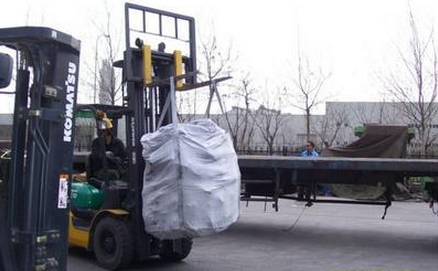
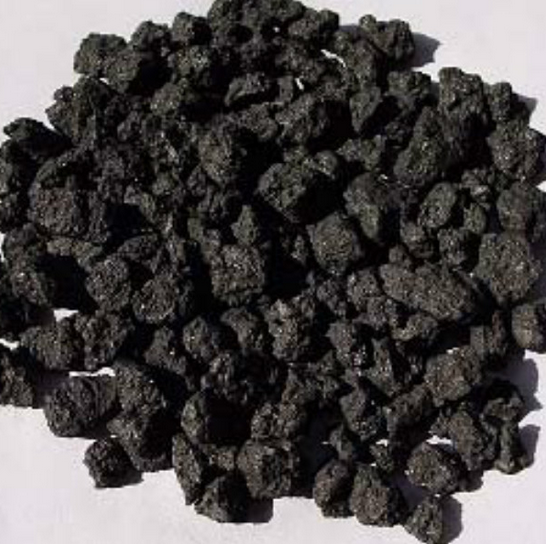
- Q: What's the reason for grading? What about the use of composites? What's the difference?
- 3, carbon fiber has high strength, high modulus, high temperature resistance, corrosion resistance, fatigue resistance, creep resistance, electrical conductivity, heat transfer and other characteristics, is a typical high-tech products. Mainly used in the preparation of advanced composite materials (ACM), has been widely used in aerospace, sporting goods industry, industrial fields, transportation and civil construction field. In view of the composite technology in military industry, reduce the cost of carbon fiber atrophy and advanced low cost manufacturing breakthrough, carbon fiber composite material used in construction, industry, transportation and other aspects has become a hot research and development, and achieved a breakthrough in certain
- Q: How does carbon affect the formation of droughts?
- Carbon does not directly affect the formation of droughts. However, increased carbon dioxide levels resulting from human activities contribute to climate change, which can lead to changes in precipitation patterns and increased likelihood of drought conditions in certain regions.
- Q: What is carbon offsetting in the fashion industry?
- Carbon offsetting in the fashion industry refers to the practice of compensating for the greenhouse gas emissions produced during the production, transportation, and disposal of clothing and accessories. This process involves investing in projects or activities that reduce or remove an equivalent amount of carbon dioxide (CO2) from the atmosphere to offset the emissions generated by the industry. Fashion is known for its significant contribution to environmental degradation, with the production of textiles, manufacturing processes, and transportation all contributing to carbon emissions. Carbon offsetting provides a way for fashion brands and companies to take responsibility for their carbon footprint and work towards reducing their environmental impact. There are various ways in which carbon offsetting is implemented in the fashion industry. One common method is through the support of renewable energy projects, such as wind farms or solar power plants, which generate clean energy and reduce the reliance on fossil fuels. By investing in these projects, fashion brands can offset a portion of their emissions by supporting the production of renewable energy that displaces the need for fossil fuel-based energy sources. Another approach to carbon offsetting is through reforestation or afforestation projects. Trees play a crucial role in absorbing CO2 from the atmosphere, so planting trees or conserving existing forests can help offset emissions. Fashion companies can invest in projects that protect existing forests from deforestation or support initiatives that plant trees in areas affected by deforestation or land degradation. Moreover, some fashion brands opt for carbon offsetting by investing in projects that capture and store carbon dioxide from the atmosphere, such as carbon capture and storage (CCS) technologies. These projects focus on removing CO2 emissions from industrial processes, preventing them from being released into the atmosphere. It is important to note that carbon offsetting should not be seen as a complete solution to the fashion industry's environmental impact. While it can help mitigate some of the emissions, it is crucial for brands to prioritize reducing their carbon footprint through sustainable practices, including using eco-friendly materials, improving energy efficiency, and implementing circular fashion initiatives. Overall, carbon offsetting in the fashion industry is a strategy to compensate for the greenhouse gas emissions generated throughout the supply chain. By investing in projects that reduce or remove an equivalent amount of CO2 from the atmosphere, fashion brands can take steps towards minimizing their environmental impact and working towards a more sustainable future.
- Q: What are carbon sinks?
- Carbon sinks are natural or artificial reservoirs that absorb and store carbon dioxide from the atmosphere, helping to mitigate climate change by reducing greenhouse gas concentrations. Examples of carbon sinks include forests, oceans, and soil.
- Q: How does carbon impact the availability of clean transportation?
- Carbon emissions from burning fossil fuels contribute to climate change, which affects the availability of clean transportation. Increased levels of carbon dioxide in the atmosphere trap heat, leading to rising global temperatures and extreme weather events. This, in turn, impacts the infrastructure necessary for clean transportation, such as roads, bridges, and railways. Additionally, carbon-intensive transportation systems, like gasoline-powered vehicles, contribute to air pollution, which further hinders the development and adoption of cleaner transportation alternatives like electric vehicles.
- Q: What is carbon nanotechnology?
- Carbon nanotechnology is a branch of science and engineering that focuses on the manipulation and study of materials at the nanoscale using carbon-based materials, such as carbon nanotubes and graphene. Nanotechnology, in general, deals with structures and devices at the nanometer scale, which is about 1 to 100 nanometers in size. Carbon nanotechnology takes advantage of the unique properties of carbon to create and control nanostructures with exceptional mechanical, electrical, and chemical properties. Carbon nanotubes, for example, are cylindrical structures made of carbon atoms arranged in a hexagonal lattice. They have remarkable strength, thermal conductivity, and electrical properties due to their unique structure. Carbon nanotubes can be used in a wide range of applications, such as electronics, energy storage, and materials science. They hold great promise for creating stronger and lighter materials, more efficient batteries, and faster and smaller electronic devices. Graphene, another carbon-based material, is a single layer of carbon atoms arranged in a hexagonal lattice. It is known for its exceptional strength, electrical conductivity, and thermal conductivity. Graphene has the potential to revolutionize various industries, including electronics, medicine, and energy. Its properties make it a promising candidate for flexible electronics, high-performance batteries, and even drug delivery systems. Carbon nanotechnology also involves the development of methods to synthesize and manipulate carbon-based nanostructures. Researchers use various techniques like chemical vapor deposition, laser ablation, and molecular self-assembly to create nanoscale carbon materials. These techniques allow for precise control over the size, shape, and properties of the nanostructures, enabling the design of materials with tailored properties for specific applications. In summary, carbon nanotechnology is a field that explores the unique properties and applications of carbon-based materials at the nanoscale. It holds immense potential for revolutionizing various industries and creating new technologies that could benefit society in numerous ways.
- Q: How is carbon used in the production of pigments?
- Carbon is used in the production of pigments as a black colorant or as a base for creating various shades of gray. Carbon black, which is made by burning or decomposing organic materials, is commonly used as a pigment due to its intense black color. Additionally, carbon can be used to create different pigments by combining it with other elements or compounds, resulting in a wide range of colors for various applications in industries such as paints, inks, and plastics.
- Q: What are the effects of carbon emissions on the stability of urban infrastructure?
- Urban infrastructure stability is significantly impacted by carbon emissions. The atmosphere is polluted with carbon dioxide and other greenhouse gases from different sources like industrial activities, transportation, and energy production, resulting in climate change. This, in turn, poses numerous challenges to urban infrastructure. Among the primary effects of carbon emissions on urban infrastructure stability is the increased frequency and severity of extreme weather events. Climate change leads to more intense heatwaves, storms, hurricanes, and flooding, causing substantial damage to buildings, roads, bridges, and other infrastructure components. Higher temperatures also cause materials to expand and contract, resulting in structural issues and reduced durability. Additionally, rising sea levels caused by carbon emissions contribute to the melting of polar ice caps, putting coastal cities at risk of flooding and erosion. This threatens critical infrastructure in these areas, such as ports, water treatment facilities, and transportation systems. The stability of urban infrastructure is compromised as sea levels continue to rise. Carbon emissions also impact energy supply and demand, affecting urban infrastructure stability. Climate change leads to extreme weather events that disrupt power grids and energy infrastructure, resulting in blackouts and service disruptions. Moreover, the increased demand for cooling systems due to rising temperatures can strain existing infrastructure and overload the electrical grid. Furthermore, carbon emissions contribute to air pollution, which negatively affects the health and well-being of urban populations. Poor air quality leads to respiratory and cardiovascular diseases, impacting the workforce and productivity. This indirectly affects the stability of urban infrastructure, as a healthy and productive population is crucial for the functioning of cities. To mitigate the effects of carbon emissions on urban infrastructure stability, various measures can be implemented. These include transitioning to renewable energy sources, improving energy efficiency in buildings and transportation, implementing sustainable urban planning strategies, and investing in climate-resilient infrastructure. These actions can reduce carbon emissions and build infrastructure capable of withstanding the challenges posed by climate change, ultimately ensuring the stability and resilience of urban areas.
- Q: How does carbon dioxide affect the formation of smog?
- Carbon dioxide (CO2) does not directly contribute to the formation of smog. Smog is primarily formed by the interaction of sunlight with other pollutants such as nitrogen oxides (NOx) and volatile organic compounds (VOCs). These pollutants are emitted from various sources including vehicles, industrial processes, and power plants. However, while carbon dioxide does not directly participate in smog formation, it does play a significant role in contributing to climate change. CO2 is a greenhouse gas, meaning it traps heat in the Earth's atmosphere and contributes to the warming of the planet. As the Earth warms, it can lead to changes in weather patterns, resulting in more stagnant air conditions that can exacerbate smog formation. Additionally, the burning of fossil fuels, which releases carbon dioxide, is a major source of air pollutants like NOx and VOCs. So while CO2 itself may not directly contribute to smog formation, the activities that release CO2 can indirectly contribute to smog by releasing other pollutants that are involved in its formation. Therefore, the impact of carbon dioxide on smog formation is indirect, primarily through its contribution to climate change and the release of other pollutants. Reducing carbon dioxide emissions and transitioning to cleaner energy sources can help mitigate climate change and indirectly reduce the factors that contribute to smog formation.
- Q: What are the differences between the three carburizing, nitriding and carbonitriding? What are the different effects on the material?
- Carburizing: carburized workpiece after quenching and low temperature tempering, so that the surface has a high hardness of river abrasion resistance, and the heart still maintain a good plastic River toughness, so as to meet the workpiece outside the hard, internal use of tough requirementsNitriding: after the nitriding of the parts, the surface forms a nitride.
Send your message to us
Foundry coke (SIZE80--120MM) with Chinese best price
- Loading Port:
- Dalian
- Payment Terms:
- TT OR LC
- Min Order Qty:
- 10 m.t
- Supply Capability:
- 500000 m.t/month
OKorder Service Pledge
Quality Product, Order Online Tracking, Timely Delivery
OKorder Financial Service
Credit Rating, Credit Services, Credit Purchasing
Similar products
Hot products
Hot Searches
Related keywords
